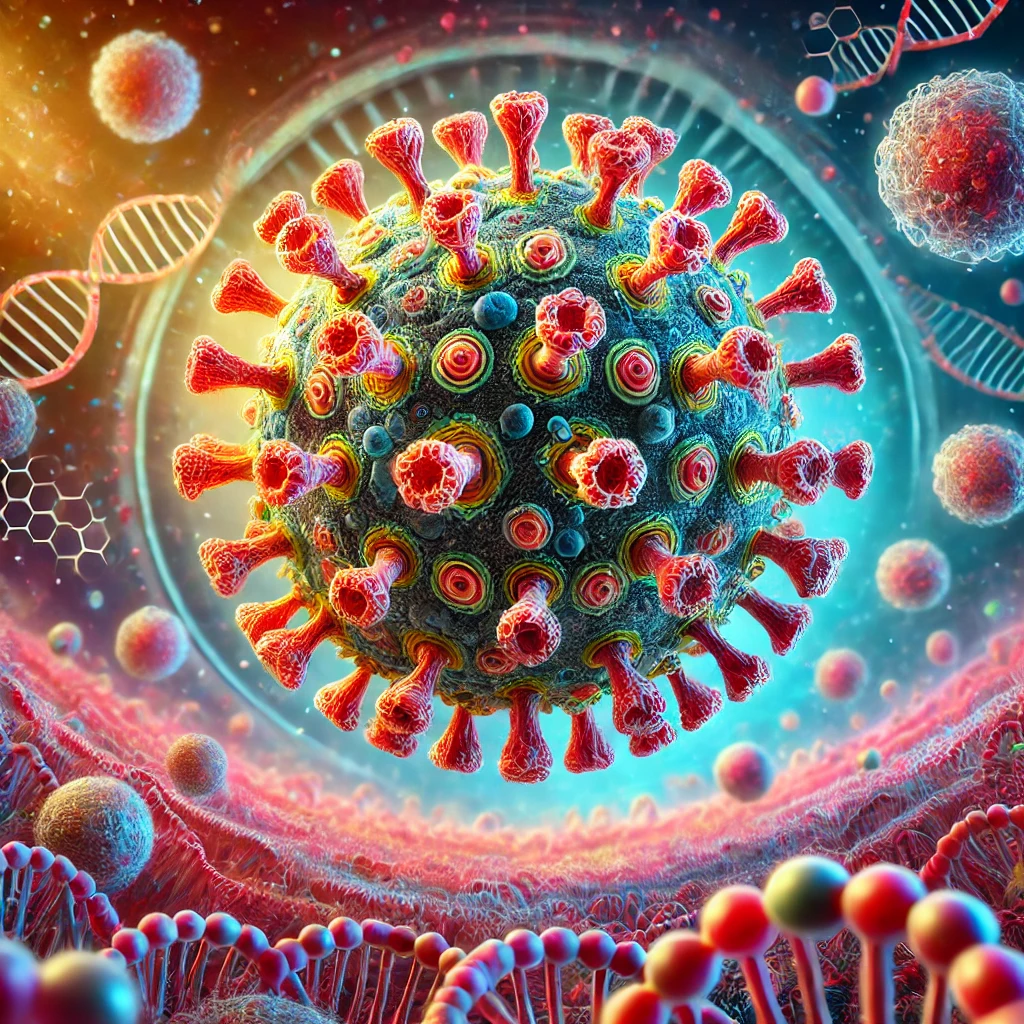Human Metapneumovirus (HMPV) is a respiratory virus that is lately being recognized as a major causative agent of upper and lower respiratory tract infections worldwide. Since its first report in 2001, the HMPV forms part of the Paramyxoviridae family, which also harbors pathogens such as the respiratory syncytial virus (RSV) and the parainfluenza viruses, among others. Nevertheless, over the past few decades, it has been established that the HMPV virus circulates in humans and infects all age groups.
In this extensive guide, we will explore what the HMPV virus is, its symptoms, how it spreads, and effective strategies to prevent infection. This information is pertinent if you are a healthcare professional or simply want to protect yourself and your family.
What is the HMPV Virus?
HMPV stands for Human Metapneumovirus. HMPV is a contagious respiratory virus that will cause various forms of illnesses that range from slight cold-like conditions to serious and severe diseases including bronchitis and pneumonia. Anyone can contract HMPV, but for the following ones, it will be especially hazardous:
Children of young ages under 5 Older people aged over 65 years
People whose immunization is weaker.
Those patients who have breathing disorders such as asthma or other chronic obstructive pulmonary disease-COPD.
HMPV infections may occur throughout the year but peak in late winter and early spring, following the pattern set by other respiratory viruses such as influenza.
Symptoms of HMPV Infection
The symptoms brought about by HMPV may be highly variable. They are influenced by age, general state of health, and the individual’s immunity. Common symptoms include:
Runny nose
Nasal congestion
Cough Sore throat
Low-grade fever
Fatigue Severe Symptoms (more likely among vulnerable populations)
High fever
Difficulty breathing
Wheezing
Persistent cough
Chest pain
Cyanosis: bluish coloration of the skin and mucous membranes resulting from lack of oxygen.
For severe cases, the virus might cause pneumonia or acute respiratory distress syndrome (ARDS), requiring admission to a hospital.
How Is the HMPV Virus Spread?
The HMPV virus is spread just like other respiratory viruses. The virus spreads mainly through the following routes:
Respiratory Droplets: When an infected person coughs or sneezes, other people may inhale the virus-laden droplets.
Direct Transmission: Touching any contaminated surface or object with the virus and then touching your eyes, nose, or mouth.
Close contact: Being close to a person infected with HMPV, especially in crowded or unventilated rooms.
It has an incubation period of 4-6 days, with symptoms beginning a few days after exposure.
HMPV Diagnosis
Diagnosis of HMPV is done through clinical assessment and laboratory tests. Because its symptoms are similar to those of other respiratory infections, including RSV, influenza, or COVID-19, laboratory tests are required for a confirmed diagnosis. These tests include:
Polymerase Chain Reaction (PCR): This detects the genetic material of the virus in respiratory samples.
Rapid Antigen Tests: This detects viral proteins in nasopharyngeal swabs.
Serology Tests: This measures antibodies produced in response to the infection.
Generally, healthcare providers test for HMPV in patients who have severe respiratory illness, especially in high-risk patients.
Treatment of HMPV Infection
Over-the-counter medications: Such as acetaminophen or ibuprofen to reduce fever and alleviate pain.
Hydration: Fluid intake to prevent dehydration.
Rest: Allowing the body to recover by getting adequate rest.
Hospitalization: Patients sometimes need supplemental oxygen, mechanical ventilation, or intensive care in severe cases. Antibiotics cannot work against HMPV since it’s a viral infection; however, they can be prescribed when a secondary bacterial infection might have developed.
Prevention: How to Protect Yourself from the HMPV Virus
Although there is no vaccine available at present for HMPV, you can take the following measures to minimize the risk of getting infected:
Apply hand sanitizer that contains at least 60% alcohol when there is no availability of soap and water.
Avoid Close Contact Maintain a distance from persons who are symptomatic of respiratory illness.
Avoid sharing utensils, drinks, or personal belongings with infected individuals.
Disinfect Surfaces: Clean frequently touched surfaces such as doorknobs, light switches, and smartphones.
Strengthen Your Immune System.
Wear Masks in High-Risk Settings.
In the case of an outbreak, wearing masks may reduce the chances of being exposed to respiratory droplets.
Stay Home When Sick.
In case you are feeling symptoms of a respiratory illness, avoid going to work, school, or public places so as not to spread the virus.
HMPV in Children: What Parents Need to Know
Children of less than 5 years of age can easily suffer from HMPV infections. In most instances, the virus acts like a cold. In severe instances, it may lead to bronchiolitis or pneumonia.
The child’s conditions that require medical supervision include:
Difficulty in breathing.
High fever that persists.
Dry mouth and little or no urination and no tears when crying.
Leaning on one side or unconsciousness.
Parents should seek prompt medical care if any of these symptoms arise.
Research and Future Outlook
Scientists are actively studying the HMPV virus to develop effective vaccines and antiviral treatments. Advances in molecular biology and immunology are paving the way for better understanding and combating this virus. As of now, public health measures and personal hygiene remain the most effective ways to mitigate its spread.
Conclusion
HMPV is one of the most common underrecognized causes of respiratory illness among children, elderly patients, and people with impaired immune systems. Symptoms are generally mild, but it can become a severe infection in some cases and requires hospitalization. Be better informed and follow good hygiene practice to protect yourself and your family from the HMPV virus.
Understanding the HMPV virus and spreading awareness is crucial for minimizing its impact on public health. With ongoing research, we can hope for more advanced treatments and preventive solutions in the near future.












